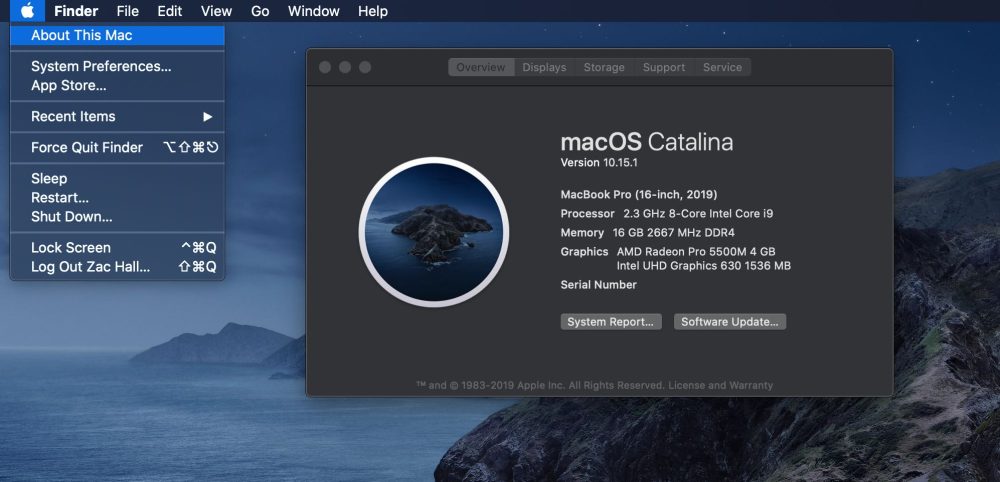- Lock Screen Mac Os X Time
- Change Mac Lock Screen
- Lock Screen For Mac Os X 10.7
- Mac Os Lock Screen Image
Lock Screen 2 is an app that allows your Mac to use iOS' lock screen. If you have never held an iOS device in your hands, let me explain. IOS devices like the iPod Touch, iPad, and iPhone let you lock your screen, which works like locking your Mac. If you’re using a Mac that’s running macOS Catalina, go to the Apple menu and choose Lock Screen or press Command+Control+Q. This will lock your Mac and return you to the Login screen. For older versions of the operating system, press Control+Shift+Power button (or Control+Shift+Eject if your Mac has an optical drive). It will lock the screen. If you have been using a blank password to log in to your Mac, change your password in Users & Groups preferences. Don't use a blank password. Don't use a blank password. While using macOS Big Sur 11.1, your Mac with Apple T2 Security Chip has an issue that requires resetting the SMC. First follow the steps from the linked Mac OS X hint to add a keyboard shortcut for Keychains Lock Screen functionality. For me (on 10.8.4) this didn't solve the problem as I had to press ctrl + F8 to shift focus to the status bar, press down to open the Keychain menu bar, and then press ctrl + F9 to lock the screen.
Your Mac asks you to enter the name and password of an admin account when it needs to verify that you have permission to make changes. For example, you must authenticate as an administrator when you click the lock in System Preferences, enter certain commands in Terminal, or set a firmware password.
Lock Screen Mac Os X Time
System Preferences might not accept a valid password in these circumstances:
- The password for your macOS user account is blank. If you have been using a blank password to log in to your Mac, change your password in Users & Groups preferences. Don't use a blank password.
- While using macOS Big Sur 11.1, your Mac with Apple T2 Security Chip has an issue that requires resetting the SMC. System Preferences should accept your password after you reset the SMC.
If the user wishes to remain logged in to their computer, but prevent others from using it, he can lock the screen. This is done in System Preferences - Security - General. By selecting 'Require password to wake this computer from sleep or screen saver,' password authentication will be necessary to leave screen saver mode. With Transparent Screensaver the user can continue to view the desktop and all open windows while the computer remains inaccessible to others, screen locked.
Feature Highlights:
* Transparent screensaver dims screen
 * Screen may be locked in transparent screensaver mode
* Screen may be locked in transparent screensaver mode* Screen may be monitored while computer is inaccessible in screen saver mode
* Prevents burn-in, maintains privacy, and protects security
* Simple to use and install utility
Version 2.3 makes Transparent Screensaver Snow Leopard compatible. The utility is self-installing after download, allows variable transparency from 0% to 100%, supports a variable screen update rate of 0 to 30 frames per second, and includes two additional screensavers: pure white and pure black. Although screen burn-in (permanent damage to a monitor from continuous display of a single image over many hours) is less of a problem with modern LCD screens than CRTs, Apple still provides an optional screensaver function when there has been no input for three hours or less. At 50% or less transparency, Transparent Screensaver provides both protection from burn-in and the ability to monitor a locked screen. Also fixed in version 2.3 is a memory leak issue present only in Mac OS X 10.6.3.
'MBS Transparent Screen Saver is an ideal solution to privacy, security, and burn-in issues in Mac OS X,' stated MBS CEO Christian Schmitz. 'It incorporates all the benefits of a screensaver, while preserving screen visibility.'

 System Requirements:
System Requirements:Change Mac Lock Screen
* Mac OS X 10.5 or later
* 228 KB
Pricing and Availability:
Lock Screen For Mac Os X 10.7
Mac Os Lock Screen Image
MBS Transparent Screensaver 2.3 for Mac OS X is currently available as shareware, which is free to test for 30 days. A license is available from MBS for 15 US Dollars, or 10 Euros. Review copies are available on request.